Ace
I agree. The routing does move all over the place and the greens are contoured just enough to be interesting yet are able to be made quite firm to ratchet up the difficulty.
LIPHOOK CONTThe good golf continues on #4. The left hand bunker is oddly placed in today's no man's land as it can't be reached off the tee and yet it is miles short of the green. I am a fan of this sort of placement if only to harass recovery shots. There are, however, some well camouflaged bunkers left and right of the green.

Of particular note is the sand on the left. A little swale shy of the green feeds toward this bunker and will have a good chance of catching a slightly pulled approach. Then and now.
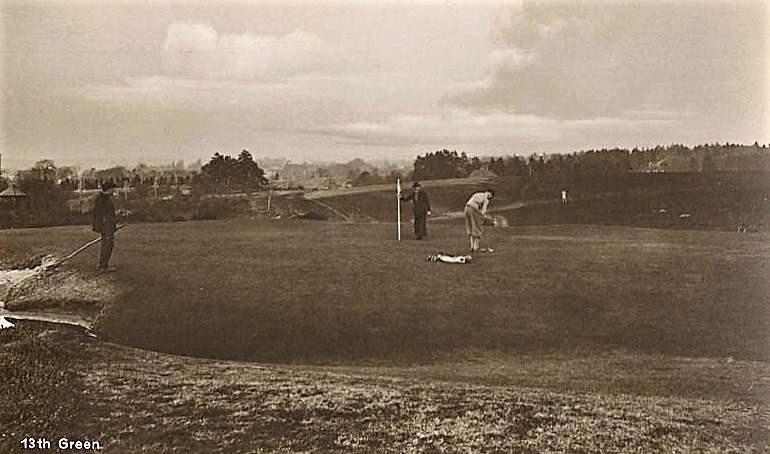

We make the first of a handful of road crossings to reach the par 5 fifth tee. On the card, all of the par 5s look as if they are merely strong par 4s due to their sub 500 yard length from the daily tees. However, #s 5 and 7 may prompt the player to ask himself if there has been an error in measurement for they seem to require two mighty blows!
It seems to me that driving to the outside of the leg is prudent. Yet when standing over the second, the hole doesn't visually favour one side over the other. It isn't until closer to the green that one spies the danger in the guise of two bunkers protecting the left of the green. Well short of the putting surface, a nest of bunkers awaits in the right heather, although, in most cases heather is a worse place to be than sand. The sunken green too is quite clever. It forces players looking to make birdie to fly the third past the ridge to the back tier or be very precise with the bump and run.
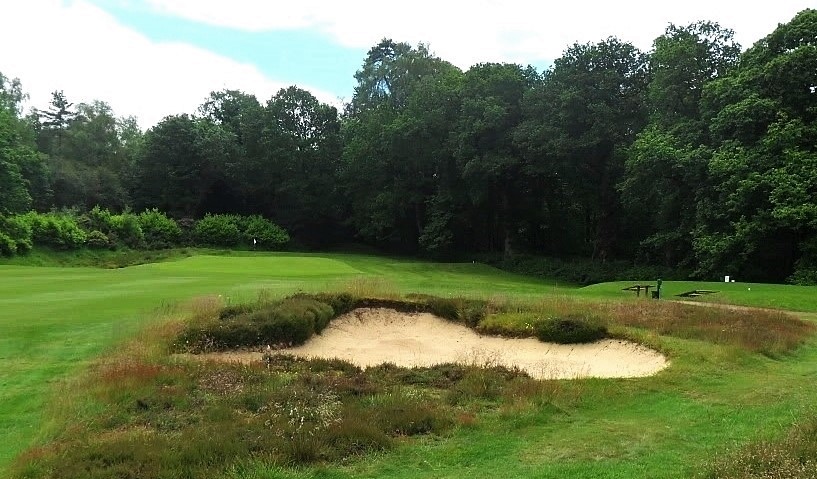
A very good two-shotter, the 6th moves right around heather (or over it for flat bellies). There is a hidden bunker on the safe left line from the tee and a pair of aiming bunkers further up the fairway for the most aggressive minded golfers. The green is well protected and favours play from those who challenge the heather off the tee.



Roads, roads and more roads! We now follow a lane to a parcel of the property which contains the bulk of the course and more importantly many of the best holes Liphook has to offer. The 7th was the 13th. Named Two Counties because the hole straddles the Hampshire-Sussex border, this three-shotter is definitely reachable in two, but it looks like one could hit the ball all day and never reach the green. There have been a few modifications to this hole such as the removal of the bunker on the right over the water, but nothing which materially alters how the hole is played.

A look at the approach for those who can't cover the abyss in two. This is visually the most striking par 5, but I don't think its any better than the more mundane 5th. I question if this hole shouldn't be a par 4 in trying to bring the water more into play with a tee not so far back.
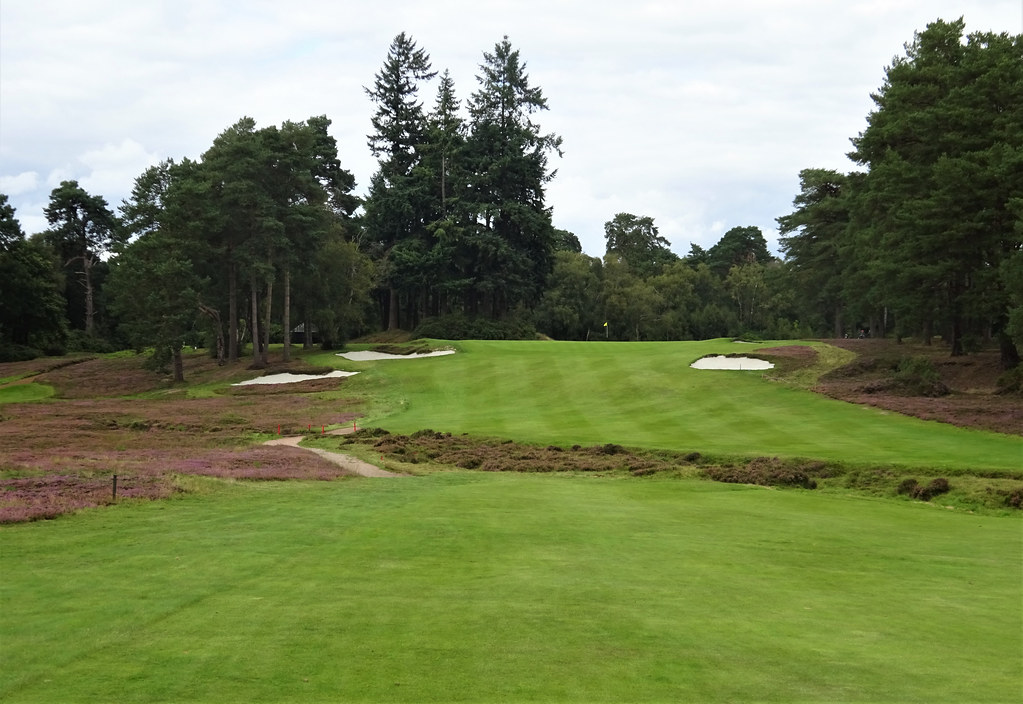
#s 8 & 9 are the entirely new holes. Both are good holes, but I wonder if the greens could have been more imaginative. The short 8th plays downhill and with a left to right slope. I dislike the trees down the left because they unnecessarily limit shot shaping.

A short par 4, the 9th doglegs hard right. Perhaps my favourite aspect of the new work is the beautiful drainage pond built on the right side of the hole after the fairway turns.

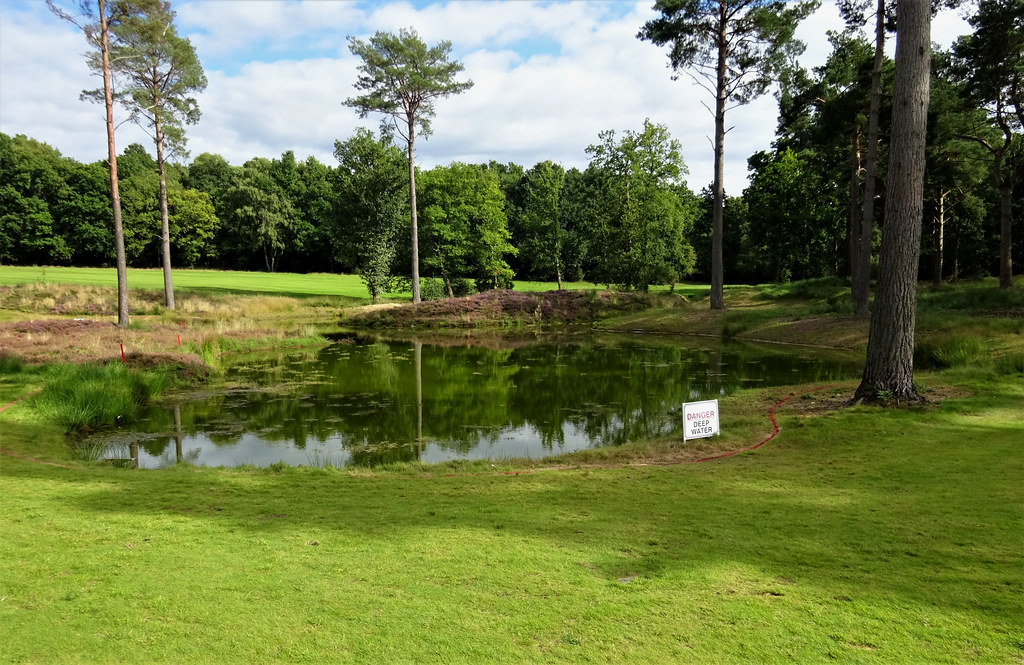
The back nine used to be punctuated by four short par 4s, none of which were completely compelling. The new layout spreads the short 4s more evenly through the course and makes for a more enjoyable back nine. The lovely 10th is a combination of the old 10th and 11th holes using the green from the 11th. For many, the approach won't be all that different from playing the old 11th, but with a slightly better angle.

Just as was the case with the old 11th, the green is a tight, but highly engaging target.

Extended some 75 yards, the 11th is now a par 5 which plays over the old green to a new, very well protected green. I don't care for the look of the approach as the trees create a clausterphobic feel. In fact, many more trees could have come out on this section of the property to open up more views.

Perhaps my favourite hole, the 12th (old 7th) is a testing one-shotter with a severe two-tier green and not much possibility of an up n' down par.

Below is how the hole appeared in what I think was some time not far shy of WWII.
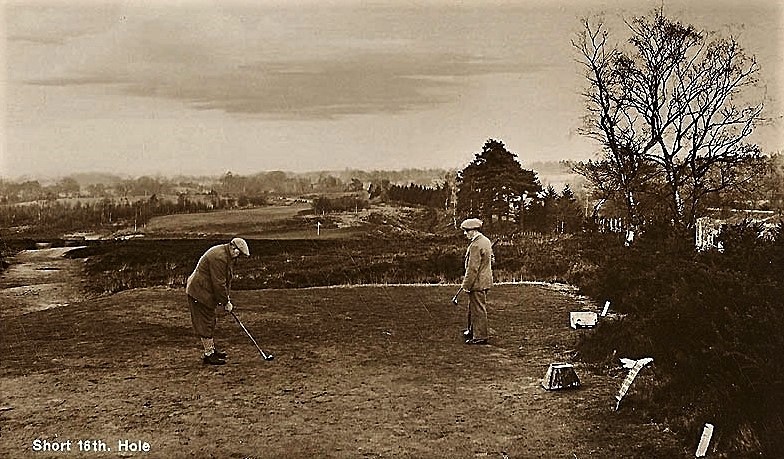
It seems as though this green has been altered somewhat.


A short par 4, though the 13th (old 8th) is not quite what I would consider driveable. Consequently, the player must decide if it is worth taking on the bunkers and the narrow landing zone for the drive. Its probably wise to lay-up, but the challenge is quite tempting despite there not being much reward for success. A very interesting green; there is a large pimple in the centre left of the surface and a general back to front and a rounded slope to the green.

We now come to what originally would have been a grand closer. The 14th (old 9th) plays over a valley to a wide fairway. The second is fairly long, blind and to a green which slips down the far side of the hill. Luckily, there is a marker post for guidance. The rig & furrow contours seen at the top of the hill continue in a less prominent fashion to the tee shot landing zone. One may wonder why there is such heavy foliage to the right; down the 12th through 14th holes is the Portsmouth to London rail line.
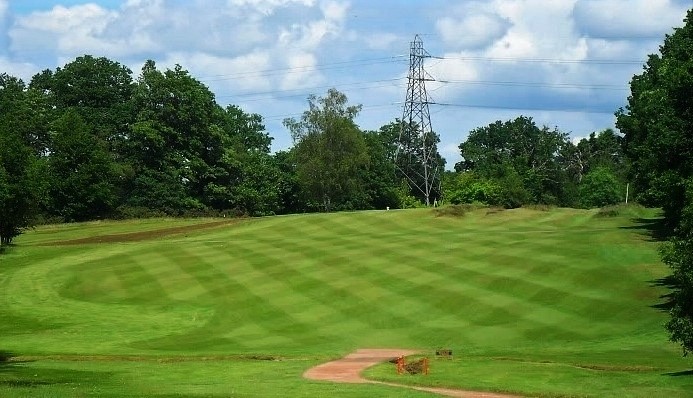
A closer look at the huge rig & furrow contours. There are several places this type of earthworks come into play.
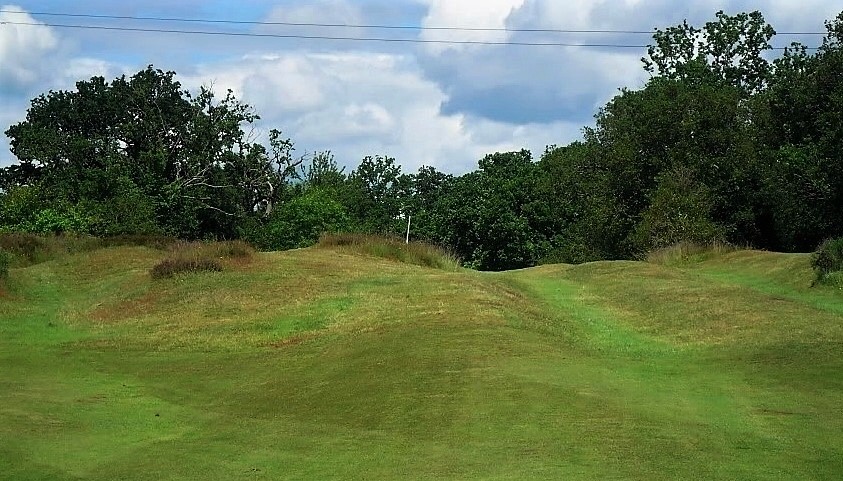
A look at the green from the crest of the hill.
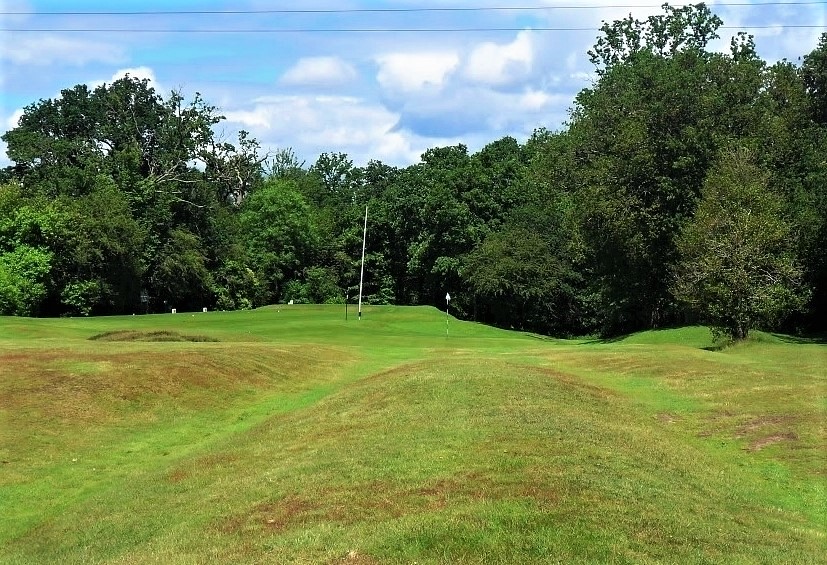
One gets the impression the ball will funnel down to the green, but there is a swale just short that will trap any weak efforts. I am sorry for the plethora of photos, but one doesn't come across many truly unique holes. While I can imagine many adamant opponents of architecture such as this I would argue this is exactly the sort of hole which helps a course distinguish itself from others cut of the same cloth.
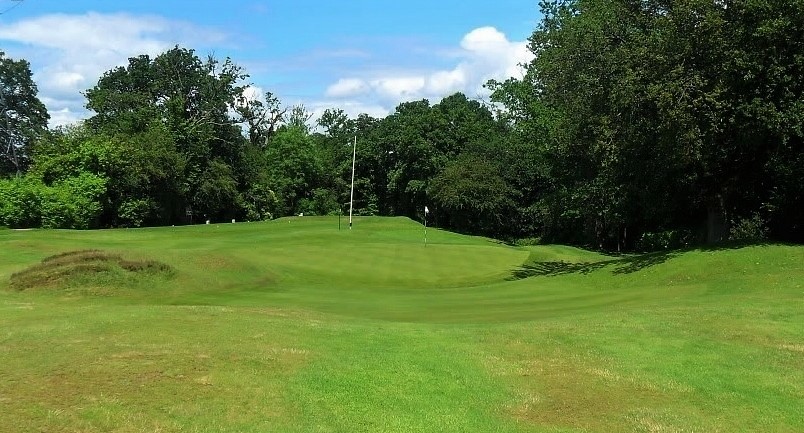
More to come.
Ciao